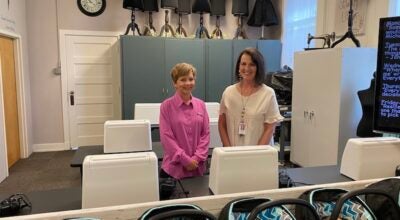ADPH issues advisories for local wild fish consumption
Published 2:45 pm Wednesday, July 17, 2019
|
Getting your Trinity Audio player ready...
|
By J.R. TIDWELL / Editor
The Alabama Department of Public Health released its 2019 fish consumption advisories for 40 bodies of water across the state on July 17.
The advisories are based on data collected by multiple agencies, including the Alabama Department of Environmental Management, Tennessee Valley Authority and Alabama Department of Conservation and Natural Resources.
According to a release, multiple samples of specific fish species were collected for analysis in these bodies of water in the fall of 2018.
Two fish species, largemouth and striped bass, were listed in the advisory for Lay Reservoir here in Chilton County. The ADPH recommends only eating one meal a month containing locally caught wild fish of these two species due to the presence of PCBs. Similar species with comparable feeding habits should also be “consumed with caution.”
According to the Environmental Protection Agency, PCBs are a group of man-made organic chemicals consisting of carbon, hydrogen and chlorine atoms. PCBs belong to a broad family of man-made organic chemicals known as chlorinated hydrocarbons.
“PCBs were domestically manufactured from 1929 until manufacturing was banned in 1979,” according to the EPA website. “They have a range of toxicity and vary in consistency from thin, light-colored liquids to yellow or black waxy solids. Due to their non-flammability, chemical stability, high boiling point and electrical insulating properties, PCBs were used in hundreds of industrial and commercial applications including: electrical, heat transfer and hydraulic equipment, plasticizers in paints, plastics and rubber products, pigments, dyes and carbonless copy paper and other industrial applications.
The EPA says that PCBs can be released into the environment today by the following:
- Poorly maintained hazardous waste sites that contain PCBs
- Illegal or improper dumping of PCB wastes
- Leaks or releases from electrical transformers containing PCBs
- Disposal of PCB-containing consumer products into municipal or other landfills not designed to handle hazardous waste
- Burning some wastes in municipal and industrial incinerators
“ADPH assessed the analytical results to determine whether any of the tested contaminants in the fish may give rise to potential human health effects,” according to the release. “Fish consumption advisories are issued for specific waterbodies and specific species taken from those areas. In reservoirs, advisories apply to waters as far as a boat can be taken upstream in a tributary, that is, to full pool elevations.
“Newly issued advisories will be represented as the safe number of meals of that species of fish that can be eaten in a given period of time, such as meals per week, meals per month or Do Not Eat Any. A meal portion consists of 6 ounces of cooked fish or 8 ounces of raw fish.”
The ADPH did not list restrictions for any fish species in the Mitchell or Jordan reservoirs, which are also a part of the lower Coosa River system.
“The advice contained in this release and complete listings of the posted fish consumption advisories are offered as guidance to individuals who wish to eat fish they catch from various waterbodies throughout the state,” said the ADPH. “No regulations ban the consumption of any of the fish caught within the state, nor is there a risk of an acute toxic episode that could result from consuming any of the fish containing the contaminants for which the state has conducted analyses.”
Anyone seeking more information or wishing to check advisories for other state waterways may visit alabamapublichealth.gov/tox/fish-advisories.html.






